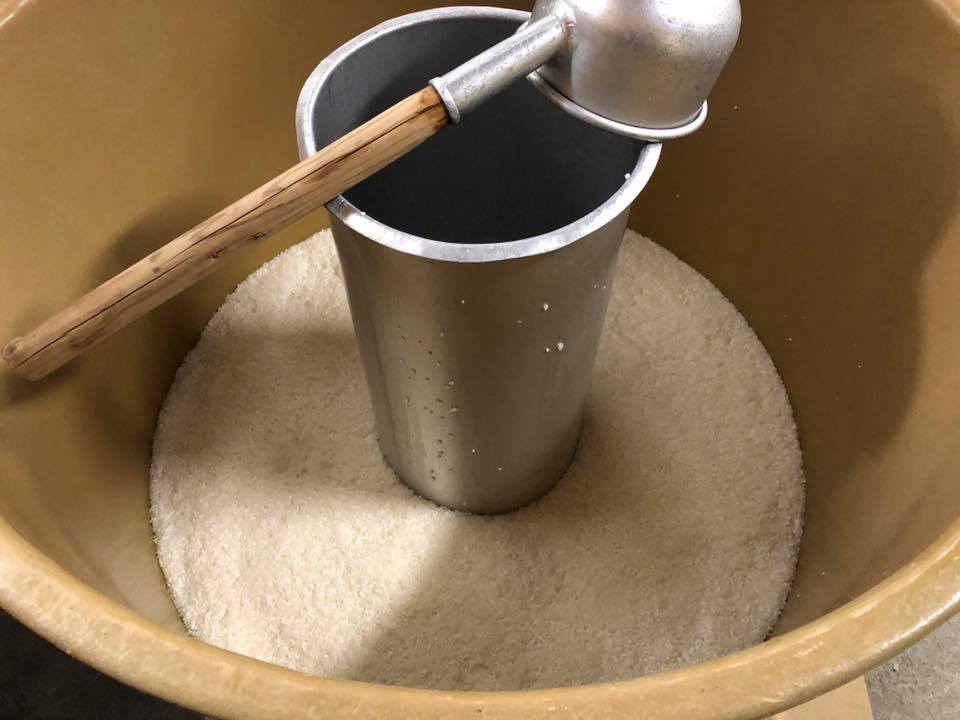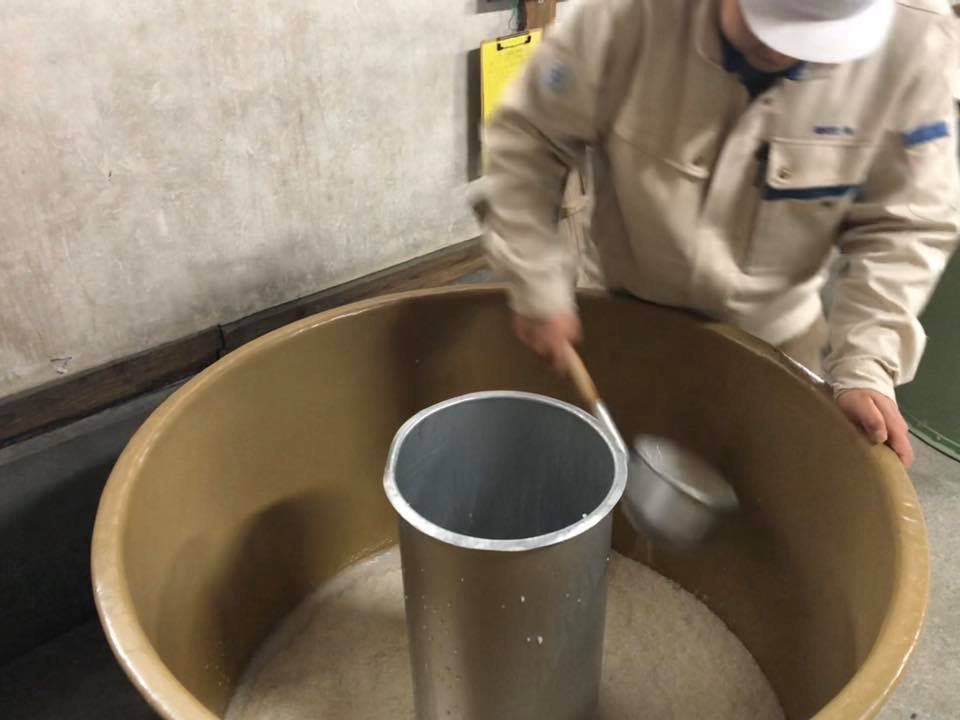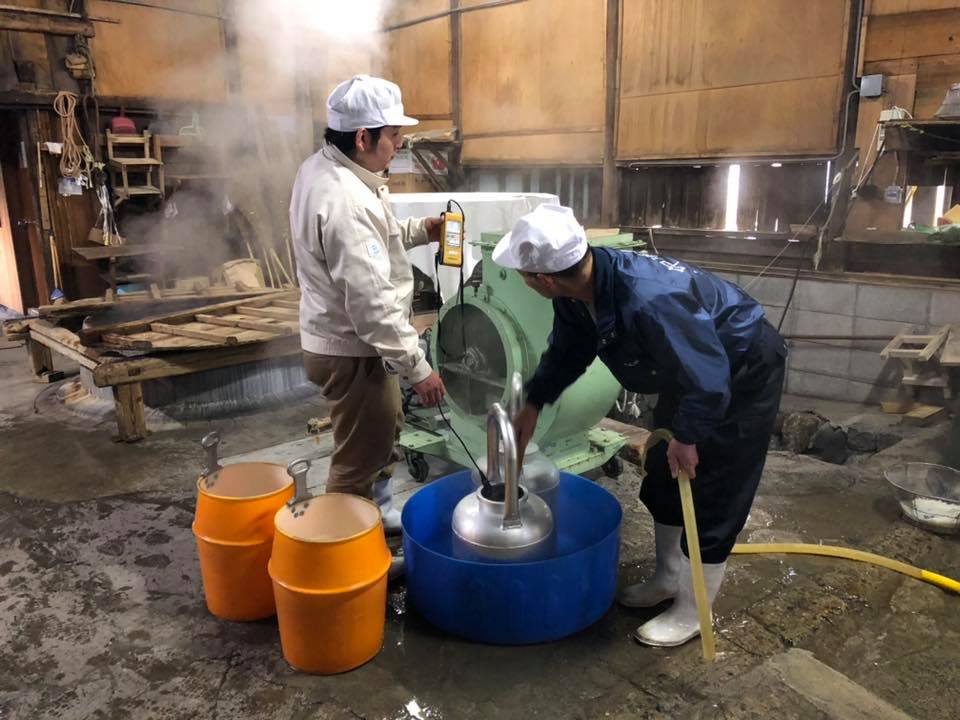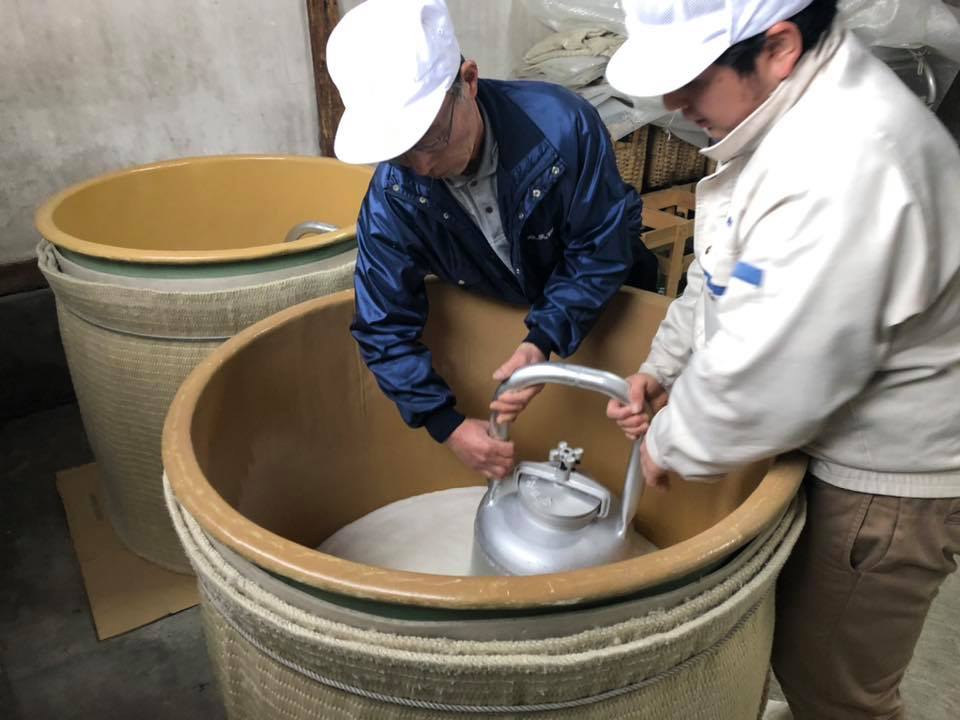☆S.tokyoの汲掛け・暖気入れしてます☆
S.tokyoの酒母に汲掛け(くみかけ)。暖気入れ(だきいれ)をしてます✨
タンクの真ん中にある円柱には、小さな穴が空いており、液体だけが円柱の中に染み込んできて、たまります。
この液体には、米麹による酵素がたくさん含まれています😊
まだ米が融けておらず、水分も少ないため、無理にかき混ぜると米が潰れてしまいます。
汲掛けをすることで、米を潰すことなく、酵素を満遍なく作用させることができます。
そのあとは、暖気入れをします😀
お湯を入れた樽を酒母の中に入れて、温めます。
温度を上げることで、米麹の酵素によりデンプンの糖化が促進されます。
ただ、温度を上げると酵母の増殖も促進されてしまうので、それでは困ります。
酵母が食べる糖が、まだ出来上がっていないからです。
増えても、食べるものがないので飢餓状態になり、良い酒母にはなりません。
微妙に温度を上げたり下げたりすることで、酵素を働かせつつ酵母を少しずつ増殖させるという、相反する要求を果たす必要があります✨

真ん中にあるのが、汲掛け機と呼ばれる、円筒です。
下の方に細かい穴が開いており、液体だけが円筒の中にた

それを振りかけることで、無理にかき混ぜなくてもまんべ

暖気入れの準備。目標温度にしたお湯をつくります。

それを、酒母の中へ。一定時間入れたら、取り出します。
少しだけ、局部的に温度を上げることで、糖化と増殖をバ
☆ He did “KUMIKAKE” ☆
He did “KUMIKAKE” for S.tokyo’s shubo✨
The cylinder in the middle of the tank has a small hole in it, and only the liquid seeps into the cylinder and collects.
This liquid contains a lot of enzymes from rice koji.
The rice is not yet melted and has little water, so if you stir it forcibly the rice will be crushed.
By pumping, the enzyme can work evenly without crushing the rice.
After that, “Dakiire” (warm up).
Put the hot water in barrel , “Shubo” is warm it✨
Increasing the temperature promotes starch saccharification by the rice koji enzyme.
However, raising the temperature also promotes the growth of yeast, which is a problem.
The glucose that yeast eats is not yet ready.
Even if they increase, they are starved because they have nothing to eat, and they do not become good “shubo”.
By subtly raising and lowering the temperature, it is necessary to fulfill the conflicting demands of growing the yeast little by little while working the enzyme✨